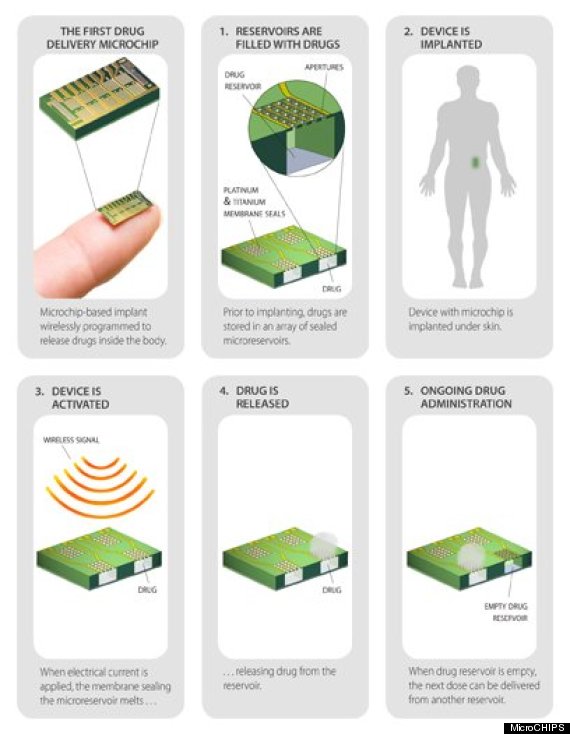First Bill Gates brought us a better condom. Now, the billionaire philanthropist and Microsoft founder is taking birth control to an even more amazing level.
Gates is backing a long-lasting implantable birth control device that can be turned on and off with a remote control. With this device -- a tiny hormone-emitting microchip -- women who decide they are ready to conceive can essentially flip a switch and start trying, according to the MIT Technology Review.
The Bill and Melinda Gates' foundation gave $4.6 million to the Massachusetts-based startup behind the device, MicroCHIPS in January.
 A diagram showing how the wireless implant works. (Courtesy of MicroCHIPS)
A diagram showing how the wireless implant works. (Courtesy of MicroCHIPS)
"The ability to turn the device on and off provides a certain convenience factor for those who are planning their family," Dr. Robert Farra, president and Chief Operating Officer of MicroCHIPS, told the BBC this week.
The device can also last up to 16 years -- more than three times as long as any comparable implantable devices on the market, including IUDs.
The founder and former CEO of Microsoft, probably the richest "nerd" on the planet, is becoming quite the good-sex philanthropist. Last month, the Gates Foundation awarded a $100,000 grant to the University of Wollongong in Australia to create a condom that allows for more sensation -- and that's only one of 11 different condom projects the foundation backed.
The technology behind the implant was originally created in the 1990s by MIT researchers Robert Langer and Michael Cima and PhD student John Santini, who later licensed it out to MicroCHIPS.
But the idea for the device apparently came from Bill Gates himself. When Gates visited Langer’s MIT lab, he asked whether it would be possible to develop a birth control method that could be used for many years and turned on and off at will, according to MIT Technology Review. Langer pointed Gates toward MicroCHIPS.
The tiny chip is designed to be implanted under the skin and stores a supply of the pregnancy-preventing hormone levonorgestrel in hermetically sealed reservoirs on a microchip inside the device. An electric current passes through the ultra-thin seal to melt it, releasing 30 micrograms of the hormone per day.
MicroCHIPS still needs to conduct pre-clinical testing on the implant, which it hopes to do next year, and then file an application with the Food and Drug Administration. MIT Technology Review also noted that the technology will need to be heavily encrypted to prevent hackers from accessing the device.
Its creators hope to bring the device to market by 2018.
